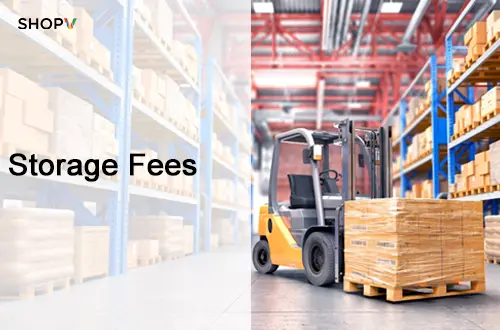How Should Amazon Sellers Avoid Being Charged Storage Fees?
Amazon FBA (Fulfillment by Amazon) provides sellers with efficient warehousing and order fulfillment services, but storage fees may become an invisible killer of profits. In particular, long-term storage fees and unsalable inventory fees, if not managed properly, may lead to a surge in costs. Data shows that more than 60% of sellers pay an extra $20,000+ in storage fees each year due to improper inventory management; even worse, they are forced to abandon goods due to high long-term storage fees and lose their principal.
Table of Contents
For B2B companies and Amazon e-commerce sellers, optimizing inventory management and rationally planning storage strategies are the key to reducing costs. This article will deeply analyze the factors affecting Amazon storage fees, optimization strategies and solutions of professional fulfillment service providers to help sellers improve operational efficiency and reduce unnecessary costs.

Amazon storage fees
Amazon's storage fees mainly include standard storage fees and long-term storage fees. Standard storage fees are calculated based on the volume and storage time of the inventory, while long-term storage fees charge high fees for inventory that is stored for more than a certain period of time.
Standard storage fee
Calculation method: Calculated based on the volume and storage time of the inventory, usually charged by cubic feet or kilograms.
Avoidance method: Minimize the storage time of inventory and maintain inventory turnover.
Calculation method: According to "average daily volume (cubic feet) × monthly rate" or "average daily weight (pounds) × monthly rate" (the larger value).
Long-term storage fee
Calculation method: Amazon will charge high long-term storage fees for inventory stored for more than 365 days.
Avoidance method: Clear inventory regularly to avoid inventory backlogs.
Charging standard: 6.90 per cubic foot per month (latest policy in 2024), or 0.15 per item (the higher value).
Other related Amazon fees
Unsaleable inventory surcharge: If the inventory exceeds 365 days, the fee will increase significantly.
Inventory removal fee: When the seller takes the initiative to remove inventory, they need to pay a handling fee.
Warehousing fee: Additional handling fee due to label errors, damaged packaging, etc. (15-50/box);
Sorting fee: Additional handling fee for multi-SKU orders (0.5-2/order);
Warehouse transfer fee: Fees for transferring to other warehouses due to excess inventory (50-200/cubic feet).
Seller pain points:
Inventory backlog leads to a surge in monthly storage fees;
Unsaleable goods occupy storage space for a long time, triggering long-term storage fees;
Insufficient or excessive stocking during peak seasons affects profits and cash flow.
How to avoid high storage fees?
Optimize inventory management
Accurate demand forecasting: Use historical sales data, market trends and seasonal factors to accurately predict demand and avoid excessive inventory.
Timely replenishment: Replenish in time according to sales speed to avoid inventory backlogs.
Diversified product portfolio: Expand product lines and reduce inventory risks of single products.
Monitor inventory turnover
Calculate inventory days on hand to ensure inventory liquidity. Use smart inventory management systems to monitor inventory status in real time to avoid backlogs.
Use FBA Prep services
Optimize packaging and labeling to ensure that inventory meets Amazon standards and reduce additional handling costs. Plan warehousing time in advance to avoid surges in storage fees during peak seasons.
Choose third-party warehousing fulfillment services
Use overseas warehouses to reduce FBA warehousing dependence and reduce long-term storage fees. Flexible inventory management to adjust inventory distribution according to sales trends.
Clear inventory
Monitor inventory age: Check inventory age regularly to identify slow-moving or outdated inventory.
Take advantage of Amazon's cleanup program: Participate in Amazon's cleanup and liquefaction programs to clear excess inventory.
FAQs about Amazon inventory management
How to avoid inventory backlogs due to forecasting errors?
Provide dynamic inventory forecasting models based on historical sales data, seasonal fluctuations, and competitive product analysis;
Support small batches and high-frequency replenishment to reduce the risk of single stocking.
How to reduce storage volume through product packaging?
Utilize the FBA Prep service (labeling, subpackaging, and combination packaging) provided by Shopv to optimize product size to reduce storage fees; recommend foldable and stackable environmentally friendly packaging materials to save storage space.
The core value of Shopv's third-party warehousing services
Intelligent warehouse management system: real-time monitoring of inventory levels and automatic warning of unsalable risks;
Multi-channel order fulfillment: seamless connection with Amazon, independent stations, eBay and other platforms to improve inventory turnover;
Localized services: overseas warehouses are set up in the United States, Europe, Southeast Asia and other places to support localized distribution and reduce last-mile costs.
Do you want to further optimize your inventory management strategy? Contact us now to get a customized warehousing fulfillment solution!










